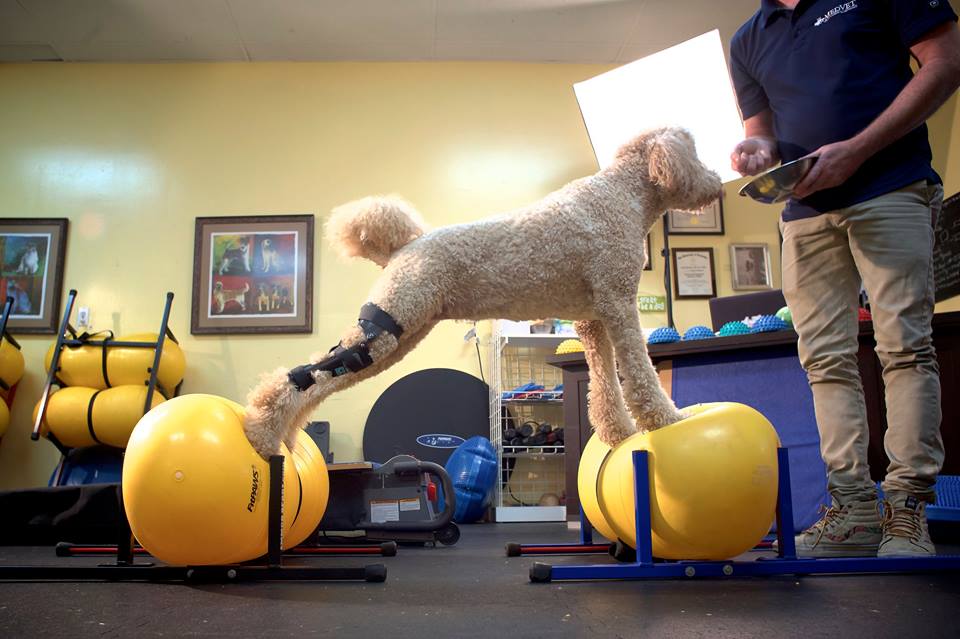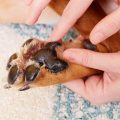A torn ACL is a common injury in dogs that can cause a lot of pain and discomfort. Unfortunately, ACL surgery can be quite expensive, and not everyone can afford it. If you find yourself in this situation, there are still options available to you.
First and foremost, it is important to note that it is possible for a dog to survive with a torn ACL. However, it may not be the best option for their long-term health and quality of life. Conservative treatment options for a canine ACL tear include physical therapy, chiropractic adjustments, acupuncture, massage, nutrition, the use of a leg brace, NSAIDs, and anti-inflammatory supplements. These treatments can help manage pain and inflammation and may even promote healing in some cases.
However, it is important to note that non-surgical treatment options typically take longer to see results than surgery. It can take between six weeks to two months for recovery, followed by a gentle program of exercise. Additionally, non-surgical treatment carries a higher risk of meniscal injury, which can be a disaster for the stifle (knee).
If your dog is not a good candidate for surgery or if it is financially out of reach, non-surgical treatments are an alternative. It is important to work closely with your veterinarian to determine the best course of action for your individual situation.
If you cannot afford ACL surgery for your dog, there are still options available. Conservative treatments can be effective in managing pain and promoting healing, but they may take longer to see results and carry a higher risk of complications. Ultimately, the decision of how to proceed is up to you and your veterinarian.
Living Comfortably with a Torn ACL in Dogs
A torn anterior cruciate ligament (ACL) is a common injury in dogs, especially in those who are active or overweight. While it is possible for a dog to live with a torn ACL, it may not be the most comfortable or ideal option.
The ACL is a ligament that connects the femur (thigh bone) to the tibia (shin bone) and helps support the knee joint. When the ACL is torn, the knee joint becomes unstable, which can cause pain, lameness, and arthritis over time.
Without surgery, a dog with a torn ACL may experience a decreased quality of life. They may have difficulty walking, running, and playing, which can lead to weight gain, muscle loss, and a decreased overall activity level. Over time, the affected leg may become weaker and less mobile, making it harder for the dog to get around.
While surgery for a torn ACL can be expensive, it is often the best option for improving a dog’s quality of life. Surgery can help stabilize the knee joint, reduce pain and inflammation, and allow the dog to resume normal activity levels. Recovery from surgery can take several months, and dogs may need to undergo physical therapy or rehabilitation to regain strength and mobility in the affected leg.
While it is possible for a dog to live with a torn ACL, it may not be the most comfortable or ideal option. Surgery can greatly improve a dog’s quality of life and should be considered if financially feasible.

Treating a Torn ACL in a Dog Without Surgery
A torn ACL, or anterior cruciate ligament, can be a painful and debilitating injury for dogs. While surgery is often recommended to repair the damage, there are some conservative treatment options available for pet owners who prefer to avoid or delay surgery.
Physical therapy is one such option. This may include exercises to strengthen the muscles surrounding the injured knee, as well as range-of-motion exercises to improve flexibility and mobility. Hydrotherapy, or aquatic therapy, is also an option for some dogs, as the buoyancy of water can help reduce the strain on the injured knee.
Chiropractic adjustments can also be beneficial, as misalignments in the spine or pelvis can contribute to knee problems. Acupuncture, massage, and other forms of alternative medicine may also provide pain relief and promote healing.
Nutrition is an important consideration for dogs with ACL injuries, as excess weight can put additional strain on the injured knee. A diet that is high in protein and low in carbohydrates can help dogs maintain a healthy weight and promote healing.
The use of a leg brace may also be recommended to provide support and stability to the injured knee. Nonsteroidal anti-inflammatory drugs (NSAIDs) and anti-inflammatory supplements may also be used to control pain and inflammation.
While surgery is often the preferred treatment for a torn ACL in dogs, there are a variety of conservative treatment options available that can help manage pain, promote healing, and improve quality of life for affected pets.
Consequences of Not Undergoing ACL Surgery for Dogs
Cranial cruciate ligament rupture is a common injury in dogs, and if left untreated, it can lead to several complications. One of the most significant risks of not opting for surgery is the development of meniscal injury.
The meniscus is a cartilage structure that provides cushioning between the bones in the knee joint. When the cranial cruciate ligament is ruptured, the meniscus can become damaged due to increased pressure on the joint. This can lead to swelling, pain, and lameness in the affected leg.
If your dog was initially limping but is now non-weight bearing lame on the leg, it is highly likely that the meniscus has been damaged. A meniscal tear can be a severe complication and can further worsen the condition of the knee joint. The longer you wait to address the issue, the more challenging it becomes to treat.
Without surgery, the affected leg’s stability and function will continue to deteriorate, leading to chronic pain and arthritis. As a result, your furry friend will have difficulty walking, running, and playing, significantly reducing their quality of life.
It is crucial to seek treatment for cranial cruciate ligament rupture in your dog, and surgery is often the best option. Delaying treatment can lead to meniscal injury, and the longer you wait, the more challenging it becomes to treat.
Healing a Dog’s ACL Without Surgery
A dog’s ACL injury can be treated without surgery, but it requires patience and dedication from the owner. Non-surgical treatment for ACL injuries usually takes between six weeks to two months for recovery, followed by a gentle programme of exercise. During this period, the dog must be kept on strict rest, which means no running, jumping, or playing. The owner must ensure that the dog’s movements are limited to prevent further damage to the affected leg.
Pain medication and anti-inflammatory drugs may be prescribed to help ease the dog’s discomfort and reduce swelling. Additionally, cold compresses may be used to reduce inflammation and promote healing.
Physical therapy is also essential during the healing process. The owner may be required to perform range-of-motion exercises with the dog to keep the leg mobile and prevent muscle atrophy. As the dog begins to heal, controlled exercise can be gradually introduced to aid in strengthening the affected leg.
It is important to note that non-surgical treatment may not be suitable for all dogs. It is best to consult with a veterinarian to determine the best course of action for the dog’s specific condition.
Conclusion
Dogs are amazing creatures that bring joy and love into our lives. Unfortunately, they can also suffer from various injuries and illnesses, including torn ACLs. While surgery may not always be an option, it is important to seek medical attention and explore all possible treatments to improve your dog’s quality of life. Non-surgical options, such as physical therapy and medication, can also be effective in aiding recovery. As pet owners, it is our responsibility to provide the best care possible for our furry friends, and this includes seeking medical attention promptly when needed. With proper care and attention, dogs can overcome injuries and continue to live happy, healthy lives with their human companions.












